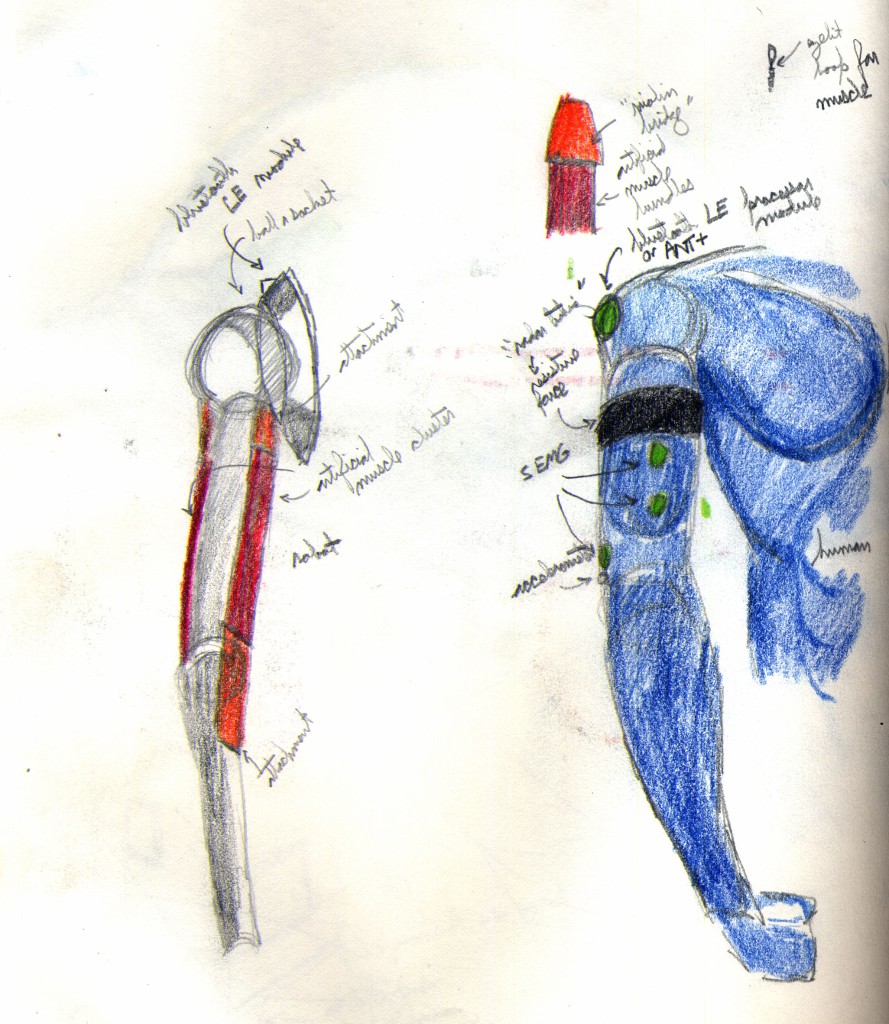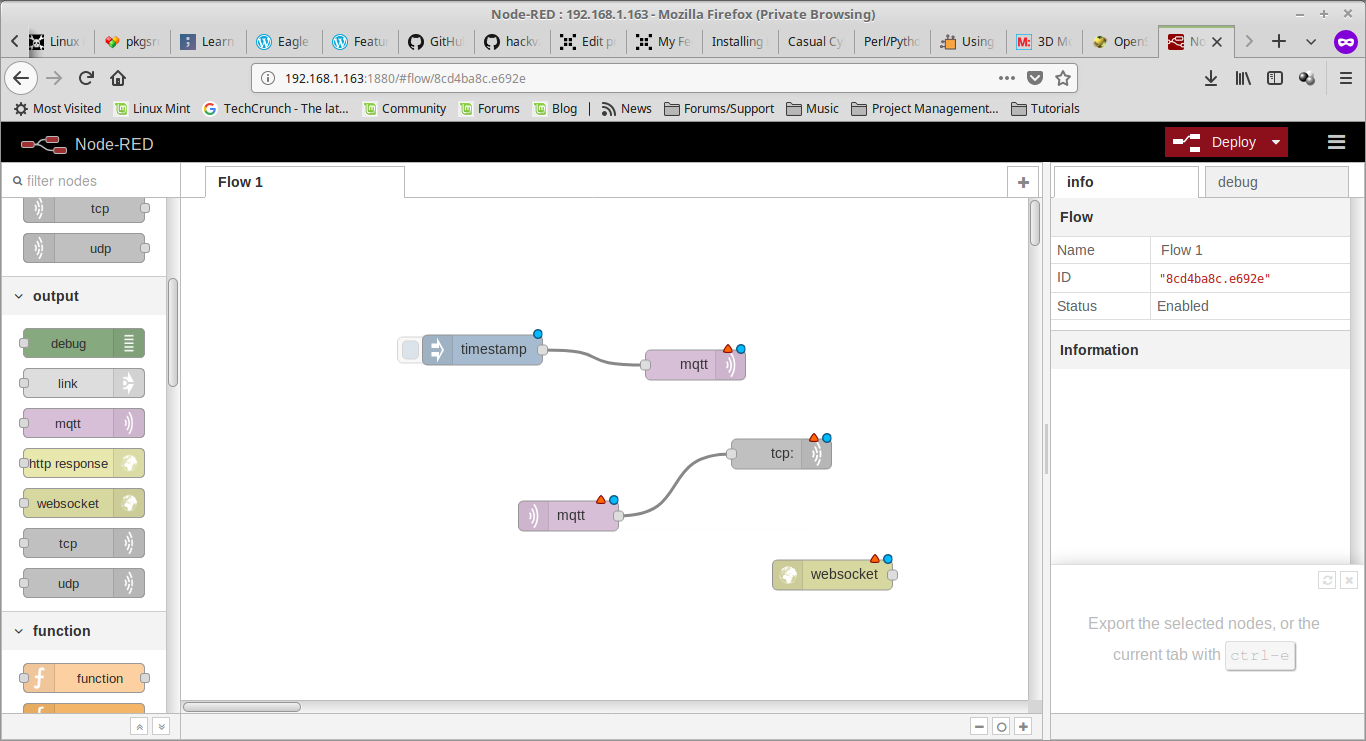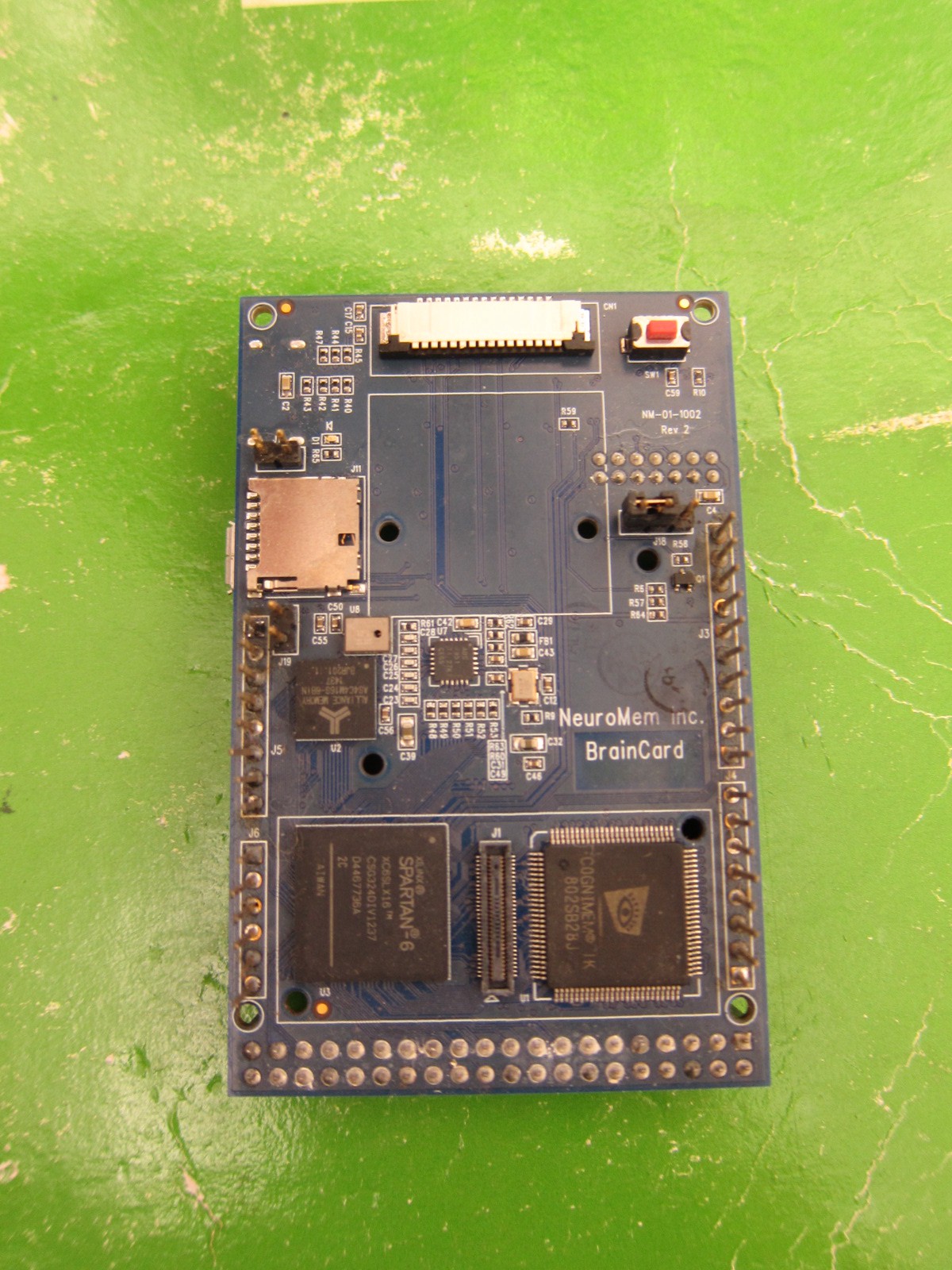The circuit board layout is done! I did it! I've completed my first PCB, which I did in EagleCAD, and I used this set of tutorials from Sparkfun.
I come from a background in gEDA. EaglePCB is functionally the same as gEDA, and far far better for generating the PCB image file than gEDA. The best part are the vast libraries, though for safety sakes I've been laying out my own custom footprints. But the first iteration of the PCB design is complete! The circuit board is below.

And here's a 3D rendition of it, using a process of exporting the eagleCAD gerber files, then using the eagle-pcb package from github to export a file that's compatible with OpenSCAD.

The dimensions of the board are 3.5 inches by 1.7 inches, which makes it very easy to integrate into clothing. That's without a battery though. Since this is my first iteration, and I just want to make a bunch to test out some concepts, I already have the 2nd iteration in mind to go. The other thing is starting out, I haven't integrated some of the geometrical concepts into the pod design yet. It's important functionally for me to have this comfortable for a physically active person, so having the circuit be as small as possible, while accommodating room for a battery pack and being wearable is important. Consequently, it has to conform to a set of guidelines that I developed when I made SEMG sensor suit. This is my hand drawn art concept for the positioning and pod design. The positioning is based on my athletic experience - I'm a long time martial artists of over 15 years.

Also, and this is an important part of this concept, I have the cloud software up and running. I'm using the open source IoT framework Node-Red to make it easy for students, and Makers in setting up their hardware/cloud interface platforms.
Node-Red is a great piece of open source software for general, GUI based interfacing with Internet of Things platforms. What I'm going to do next is have a bunch of local college of engineering students use my platform, and see what use cases crop up, and develop some custom software in Python to interface with Node-Red for a more specific cloud processing platform. Since much of my work was on human biosensor data analysis, it would have functions that collect baseline data, maximums, minimums, does basic statistical analysis like root mean square, and what I really want to incorporate is the use of neural networks to function as a second "spine."
 Replicating a basic neural network - because let's face it, I'm not going to recreate the human neural net system in its entirety, at least not presently - doesn't involve a lot of neurons. For that, in the beginning I'll integrate something like tensor flow or IBM's Watson on the backend. But what I really want to build and integrate is a wearable neural network interface with the wearable IoT device. So, I'm starting off with the Neuromem Biomorphic BrainCard. Which unfortuately isn't being made anymore. I lucked out because I've been following hardware neural networks since the 1990's, starting with the ZISC architecture of chips. I have this bad boy in my possession.
Replicating a basic neural network - because let's face it, I'm not going to recreate the human neural net system in its entirety, at least not presently - doesn't involve a lot of neurons. For that, in the beginning I'll integrate something like tensor flow or IBM's Watson on the backend. But what I really want to build and integrate is a wearable neural network interface with the wearable IoT device. So, I'm starting off with the Neuromem Biomorphic BrainCard. Which unfortuately isn't being made anymore. I lucked out because I've been following hardware neural networks since the 1990's, starting with the ZISC architecture of chips. I have this bad boy in my possession. 
It has a whopping 1024 neurons, which honestly for what I'm trying to do, could be overkill. Not to mention the chips are kind of expensive. So, while I'm integrating this, I am looking at either the Intel Curie, which has 128 neurons, and you can get on an Arduino 101, or, better yet, I've been evaluating the nm500, which comes with 512 neurons. That might just be the right size that I'm looking for.
And since I'm synthesizing Man and Machine on such an intimate level, which brings this far more inline with my original vision, the wearable, synthetic human neural network and sensor suit, it actually brought up a philosophical question about our existence with machines and machine intelligence, and a term that I'm coining to understand the phase of human technological evolution at its present, and near future state. That will be the subject of an essay I'm writing up for publication here on Hackaday. What, you thought Hackaday was just a hardware hacker/Maker website?
Expand your mind. It's far more than that.
 Casual Cyborg
Casual Cyborg
Discussions
Become a Hackaday.io Member
Create an account to leave a comment. Already have an account? Log In.